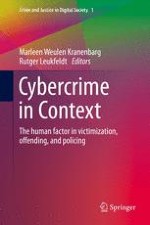2021 | OriginalPaper | Buchkapitel
Protect Against Unintentional Insider Threats: The Risk of an Employee’s Cyber Misconduct on a Social Media Site
verfasst von : Guerrino Mazzarolo, Juan Carlos Fernández Casas, Anca Delia Jurcut, Nhien-An Le-Khac
Erschienen in: Cybercrime in Context
Verlag: Springer International Publishing
Aktivieren Sie unsere intelligente Suche, um passende Fachinhalte oder Patente zu finden.
Wählen Sie Textabschnitte aus um mit Künstlicher Intelligenz passenden Patente zu finden. powered by
Markieren Sie Textabschnitte, um KI-gestützt weitere passende Inhalte zu finden. powered by
